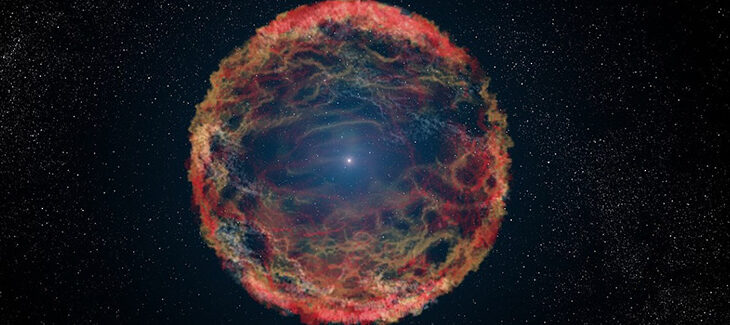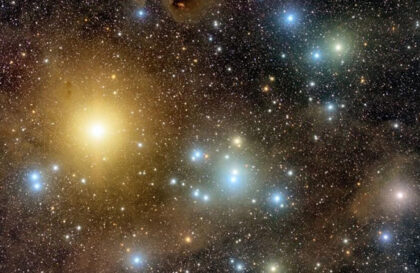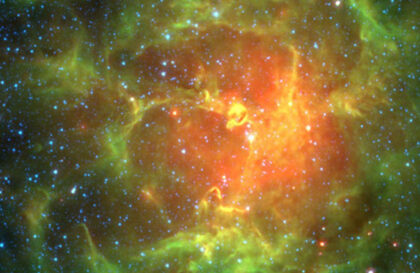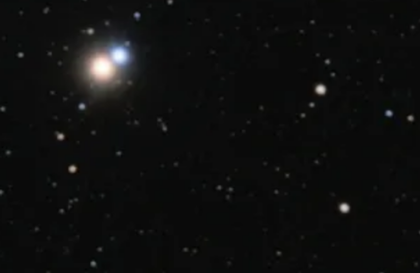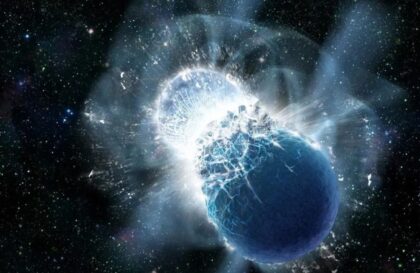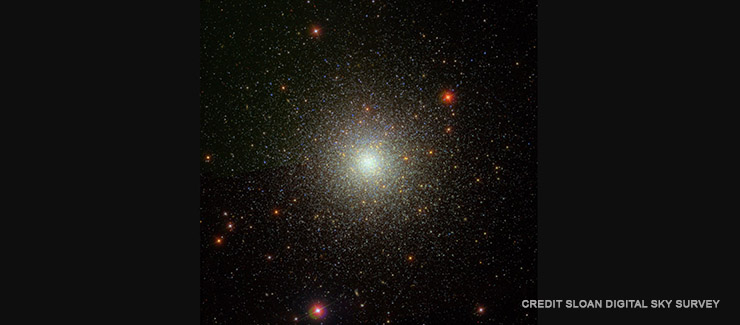How has life on Earth changed?
Numerous studies of the fossil record have shown that the diversity of life forms has varied significantly over geological time. A fundamental question in evolutionary biology is which processes are responsible for these processes.
A new study has a big surprise: varying numbers of nearby exploding stars (supernovae) are closely linked to changes in the biodiversity of marine species over the past 500 million years.
Why do supernovae affect life?
Scientists say supernova explosions affect the Earth’s climate, making it colder and increasing temperature contrasts between the equator and the poles. This promotes strong winds, mixing ocean waters and moving nutrients to the waters’ surface off the continental shelf. The researchers note that supernovae are essential for gross primary production (GPP), affecting the transport of nutrients that have implications for life on Earth. Photosynthesis (the conversion of solar energy into chemical energy by plants) has an efficiency of 1% (the so-called “1% rule”) and is mega-important for maintaining life.
Why is this happening?
When heavy stars explode, they generate cosmic rays, high-energy particles that, when reaching Earth, help form the aerosols needed to create clouds, according to research by Henrik Svensmark, a physicist and professor in the Department of Solar System Physics at the Danish National Space Institute (DTU Space) in Copenhagen and his colleagues. Because clouds regulate the amount of solar energy reaching the planet’s surface, changes in the intensity of cosmic rays experienced by the Earth over millions of years can cause significant climate changes.
Credit: Wikipedia
Consequences of the explosion
Astrophysicists from the United States, France, and Russia have assessed the possible consequences of a supernova explosion for life on Earth by examining the effects of ancient explosions that occurred at a distance of about a hundred parsecs (326 light years) from our planet and left rocks with the iron isotope Fe-60. The first event occurred 1.7-3.2 million years ago, the second – 6.5-8.7 million years ago. Published on arXiv.org, the study suggests that such a galactic catastrophe could significantly affect the Earth’s biosphere.
Supernovae pose a threat due to high-energy cosmic rays that can ionize the troposphere (the part of the atmosphere near the Earth’s surface) and increase the flux of muons to Earth for a thousand years, tripling the radiation load. This can provoke the accumulation of mutations and the formation of new types of organisms, and for humanity – an increased risk of cancer.
The Hidden Threat of Supernovas
Research using NASA’s Chandra X-ray Observatory has discovered a long-term threat to planets from supernova explosions. In addition to the initial radiation and subsequent cosmic rays, there is a transition stage in which a supernova exploding near a gas cloud can create a wave of X-rays. This wave impacts planets up to 160 light-years away, changing the chemistry of their atmospheres and potentially depleting the ozone layer, increasing the risks to life from ultraviolet radiation.
The destructive impact of supernovae on Earth
Studies of 31 supernovae have shown that their explosions can affect planets at a considerable distance. Although there is no threat from nearby supernovae such as Betelgeuse, which is 650 light-years away, Earth may have suffered an X-ray supernova explosion in the past. At least two supernovae may have exploded between two and eight million years ago. This is supported by the presence of a certain radioactive type of iron and may explain some of the historical changes in marine life. At least, that’s what NASA thinks.
Mass extinctions
Scientists have proposed a hypothesis that a supernova located about 65 light-years from Earth may have triggered ozone depletion and the mass extinction at the end of the Devonian period, 359 million years ago. They associate findings of burned plant spores with increased ultraviolet radiation. The study focused on studying the boundary between the Devonian and Carboniferous periods.
Scientists have considered the hypothesis that ozone holes, possibly related to global warming or volcanic activity, could have led to the mass extinction at the end of the Devonian period, but find this scenario inconclusive.
By examining astronomical factors such as meteorites, solar flares, and gamma-ray bursts, they concluded that only a supernova explosion could cause long-term effects. Evidence points to a gradual decline in biodiversity over 300,000 years, possibly due to several astronomical disasters, including several supernovae, as massive stars tend to form in groups.
Scientists have discovered radioactive isotopes of plutonium-244 (Pu-244) and samarium-146 (Sm-146) in rocks and fossils from the mass extinction period. They suggest that the isotopes may have arrived on Earth in a nearby cosmic explosion, likely a supernova about 65 light-years away. However, specific isotopes in rocks of the Devonian-Carboniferous boundary have yet to be discovered. Researchers plan to find additional geological evidence to support this theory, demonstrating the harsh impact of space on Earth.
Which nearby stars will go supernova?
The closest supernova to the Sun during this time erupted in the Large Magellanic Cloud, a dwarf galaxy that is a satellite of the Milky Way. This is also far away. Supernova SN1987A exploded in the Tarantula Nebula in the Large Magellanic Cloud in 1987. This is the closest supernova explosion to Earth in almost four centuries. The distance to the star was 170 thousand light years.
Image obtained with the ESO Schmidt Telescope of the Tarantula Nebula in the Large Magellanic Cloud. Supernova 1987A is clearly visible as the very bright star in the middle right. At the time of this image, the supernova was visible with the unaided eye. Credit: ESO
The flare could be observed with the naked eye, but only in the planet’s southern hemisphere. The maximum brightness did not exceed the 3rd magnitude, which is weaker than the brightness of the stars of the Ursa Major bucket. But this is not surprising because the supernova was located in another galaxy.
The supernova explosion SN1994D in the galaxy NGC 4526. The brightness at maximum did not exceed magnitude 15 – an exclusively telescopic object.
Credit: NASA/ESA, The Hubble Key Project Team and The High-Z Supernova Search Team via WikiMedia Commons
Cassiopeia A is a remnant of the supernova explosion 1572 at a distance of 11 thousand light years from us.
A new image taken with the NASA/ESA Hubble Space Telescope provides a detailed look at the tattered remains of the supernova explosion Cassiopeia A (Cas A). It is the youngest known remnant from a supernova explosion in the Milky Way. The new Hubble image shows the complex and intricate structure of the star’s shattered fragments. Credit: NASA, ESA, and the Hubble Heritage (STScI/AURA)-ESA/Hubble Collaboration
Our closest star, Proxima Centauri (hundreds of times dimmer than the Sun), and other nearby stars, including components of the Alpha Centauri and Procyon systems, do not pose a supernova threat because they are not massive enough. Only stars with a mass of 8 or more solar masses can complete their evolution with a supernova explosion, and there are no such stars in the immediate cosmic environment of the Sun.
The physical sizes of stars are deceptive – they can differ several times, but their masses will vary only by percentages.
The only dangerous star system
In the IK Pegasus system, one star is a white dwarf, and the other becomes a red giant. The white dwarf will eventually attract material from the giant, increasing its mass. Once the Chandrasekhar limit is reached (1.44 solar masses), the dwarf can explode as a Type Ia supernova. By the time of this event, the IK Pegasus system, moving away from the Sun, will be at a safe distance from us.

Credit: NASA/JPL-Caltech
No closer or more dangerous supernova candidates have been discovered. And most likely, they don’t exist. But there are likely candidates for an imminent flare at a considerable distance, which will delight astronomers, and many inhabitants of the Earth will be presented with a unique spectacle that will be quite worthy of being remembered for a lifetime.
First of all, this is the star Betelgeuse.
Banner image: NASA, ESA, and G. Bacon (STScI) via WikiMedia Commons
Image credit:
https://www.astronomy.com
https://en.wikipedia.org
https://universemagazine.com
https://www.eso.org
https://sci.esa.int
https://photojournal.jpl.nasa.gov
